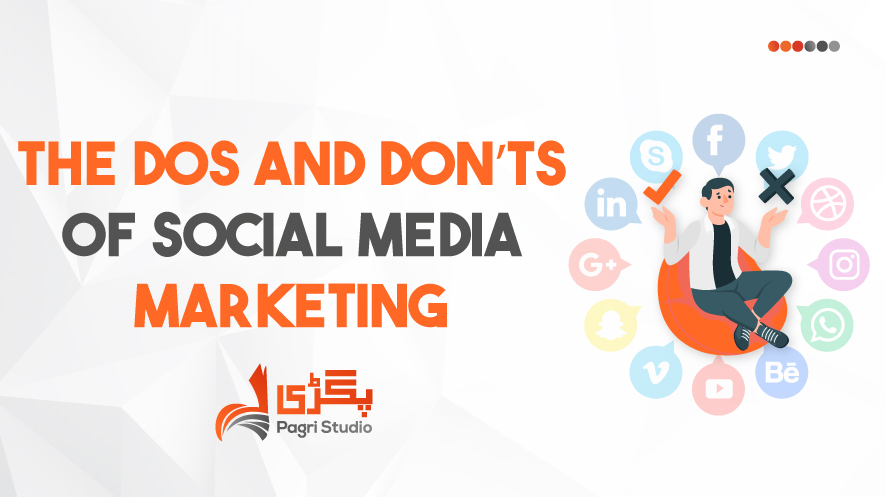Table of Contents
Introduction
Maintaining consistency between your business’s voice and visuals in today’s digital marketing arena can be challenging. A clear brand management strategy is the best way to stay on track and develop an impactful long-term branding plan.
Maintaining consistency across all platforms and touchpoints, especially on social media creates a familiar space for audiences and builds trust in the company, building lasting customer relationships in turn. This higher recognition and recall are critical in cultivating lasting customer relationships.
Define Your Brand Identity
Establishing a powerful brand identity helps set your company apart from competitors while building customer recognition and increasing brand loyalty.
An effective brand identity clearly articulates your company’s core values and goals, which are then communicated across various channels and assets such as logos, brand colors, websites, social media channels, and product packaging.
Establish a strong brand identity with clear guidelines: brand guidelines (or style guides) dictate how your brand is represented. There is an easy way to maintain consistency across all channels by creating a Brand Book a comprehensive online document that outlines your brand’s visual style, including images, icons, and logos, as well as its tone and usage rules.

Define Your Brand Identity By Creating a Brand Book
Your brand book is a Style Guide that should contain the following details:
- Typography and approved fonts
- Color palette
- Logo sizing and resizing specifications
- Proper spacing and alignment
- Correct background usage
- Examples of incorrect branding to avoid
- The Tone of voice and language guidelines
- Imagery and iconography standards
- Social media branding guidelines
- Partnerships and co-branding guidelines
Brand guidelines help ensure all team members are on the same page, with every piece of content created adhering to your brand’s voice and personality. This is especially crucial for large marketing initiatives that require multiple people working on them simultaneously. You should update these regularly with any changes or goals of the business or audience preferences.
Create Comprehensive Brand Guidelines
Brand guidelines provide internal teams, agencies, and freelancers alike with a framework for maintaining visual and verbal consistency across materials, touchpoints, and channels produced by the company, this ensures brand values are accurately represented across every piece of work produced by them.
A comprehensive brand guideline should outline the standards that should be applied in all visual and verbal communications between visual elements such as logo application, color palettes, font styles, image sizes and contexts, etc. A brand guideline must also communicate the overall tone and voice of its brand while giving instructions regarding grammar, spelling, and usage.
Brand guidelines must be clear and easy for teams across organizations to reference whenever needed. A responsive doc maker like Canva makes creating brand guidelines easy by enabling teams to collaborate simultaneously while editing the document from any device.
Conduct a Content Audit
Content auditing is the practice of conducting a systematic examination of all existing website and digital experience content for qualitative and quantitative analyses.
Start by outlining your goals and criteria for assessing content. This will enable you to prioritize improvement and determine if their results are truly worthwhile.
Conduct a detailed inventory of your content, including pages, images, documents, and assets. Utilize digital tools, CMS exports, and manual review as necessary. We should be involve other team members from the outset of this project so they are invested and aligned in evaluating content.

Conduct a Content Audit
Once your content inventory is completed, evaluate it against your content strategy and business goals. If an audit shows how guides or video tutorials perform particularly well, consider increasing their frequency or focus.
Centralize Brand Assets
Brand consistency is an effective strategy for building recognition and trust with your audience. Just think of all of the brands that resonate in your mind from streaming platforms to your daily coffee supplier; branding is what cements these associations in your memory, becoming like familiar friends whom you trust.
Accessing brand assets quickly is key to maintaining consistency across digital platforms, and can be accomplished by centrally storing brand guidelines in one location that all team members can access. This will maximize efficiency, prevent confusion, and ensure assets remain up-to-date.
An exceptional Digital Asset Management (DAM) system should also offer version control for assets, so any revisions can be easily tracked and recorded. This ensures internal teams don’t make guesses about file naming or size when making decisions; and ensures the most up-to-date version of an asset is always being used.
Train Your Team
Consistent brands create an instantly recognizable experience for their audiences and foster trust and loyalty in them. This provides brands with an opportunity to build and extend their identities and values across platforms and ultimately build trust with them over time.
Consider McDonald’s with its iconic golden arches: If the brand suddenly changed its popular red and yellow colors for sleek pinstripe designs, increased prices, and put Ronald McDonald in tailored suits, their customers may become confused about the company and may hesitate to recommend it when needed for quick bites of food.

Train Your Team
Training your internal team on your branding and messaging strategies is key to maintaining brand consistency, and creating assets that comply with guidelines while decreasing approval cycles and increasing ROI. Brand management tools provide easy ways for teams to quickly locate on-brand marketing materials for reuse.
Utilize Brand Management Tools
Maintaining brand consistency is an ongoing task that requires constant monitoring and adaptation, so make sure you have the appropriate tools such as branding monitoring platforms and analytics software in place to support this effort.
Branding monitoring platforms allow you to stay apprised of how your brand is being perceived online, allowing you to identify any inconsistencies with messaging or visual elements; analytics tools provide insight into website traffic, social media follower counts, email interactions, and user perceptions and behaviors for further study.

Utilize Brand Management Tools
By adhering to comprehensive brand guidelines, conducting regular audits, centralizing digital assets, training your team members, and using feedback loops, your brand can remain consistent across platforms, creating recognition, trust, and loyalty. It’s like the constant tone in a symphony. It gives your brand presence and drives brand recall just like having front-row seats at the ballet where dancers synchronized their steps with one another regardless of whether they were dancing to Tchaikovsky or metal music!
Conclusion
In conclusion, maintaining brand consistency across digital platforms is important for building trust, recognition, and loyalty with your audience. By defining your brand identity, creating comprehensive guidelines, conducting regular content audits, centralizing brand assets, and training your team, you can ensure a unified brand presence that resonates with your target audience.
At Pagri Studio, we understand the importance of brand consistency and offer expert services to help you achieve it. Whether you need help creating a brand strategy, creating brand guidelines, or managing your digital assets, we are here to support you.
Additional Resources:
FAQ’S
What is brand consistency, and why is it important?
Brand consistency refers to maintaining a uniform message, visual identity, and tone across all platforms. It builds trust, recognition, and loyalty with your audience. Consistency is key to establishing a strong brand presence.
How do I create a strong brand identity?
Define your core values, mission, and unique value proposition. Develop a clear visual identity, including logos, colors, and typography. Establish a consistent tone and voice across all channels.
What is a brand book, and why do I need one?
A brand book is a comprehensive guide outlining your brand’s visual style, tone, and usage rules. It ensures consistency across all marketing initiatives and teams. A brand book helps maintain your brand’s integrity and recognition.
How often should I conduct a content audit?
Regularly examine your website and digital content (every 6-12 months) to ensure alignment with your brand strategy and goals. Assess content quality, relevance, and performance to inform future content decisions.
Why is centralizing brand assets important?
Centralizing brand assets ensures easy access, consistency, and efficiency across teams. It prevents confusion, outdated assets, and miscommunication. Store brand guidelines and assets in one location for maximum impact.
How can I ensure brand consistency across social media platforms?
Establish clear guidelines for social media content, tone, and visual identity. Use brand management tools to monitor and adapt your online presence. Train your team on branding and messaging strategies to maintain consistency.



